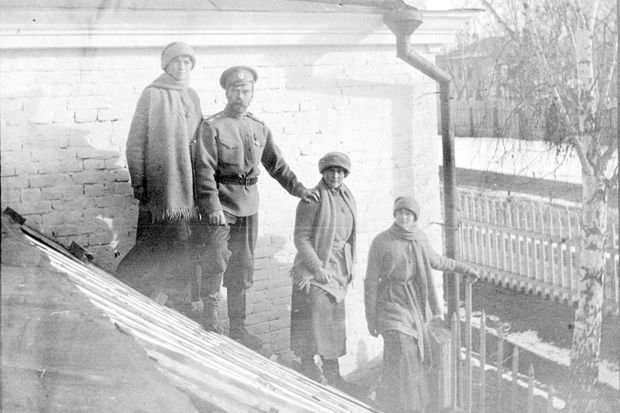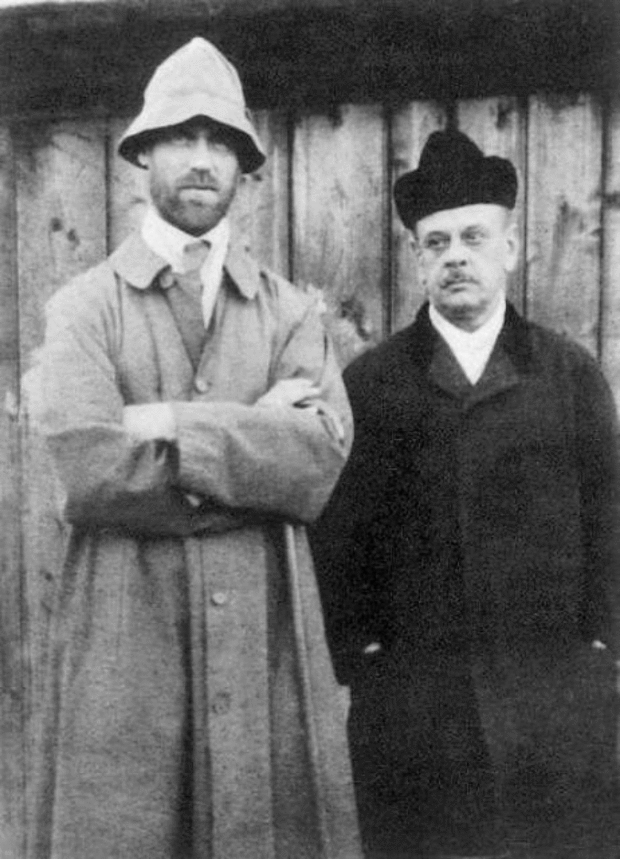Vsevolod Chaplin: ''DNA testing must play a key role in identifying the remains. But…''
Are the imperial remains falsification? An old Chicago newspaper questions the official version
The topic of belonging of Ekaterinburg remains to the imperial family has been thrilling the public for many years. Different testing provides facts and counter-arguments on this issue. For instance, analysis of a dental scientist questioned the authenticity of Nicholas II of Russia's remains. An interview from a Chicago newspaper in 1919 found by Archbishop Vsevolod Chaplin makes its contribution to the discussion. In today's column written for our online newspaper, the Orthodox priest considers different versions and asks experts and the public new questions.
Cremated or buried?
A tense discussion around the question whether the remains found near Yekaterinburg belong to Emperor Nicholas II and his family goes on. Few people in ''big'' society notice that different opinions are published almost every day. And few people understand: even if DNA testing confirms, for instance, the belonging of the found bones to representatives of the Romanov clan, this won't answer many questions. For instance, quite a widely spread version about the falsification of the burial by Soviet authorities many years after the 1918 events. This could be necessary only if members of the imperial family hadn't died in Yekaterinburg, not precisely a hundred years ago and/or in circumstances that authorities still consider necessary to hide.
There are also debates about the main documents laying on the base of the current investigation – Yurovsky Note as from 1920. I will remind that it says about the burial of the bodies right in the place in which they were found in 1979 and 2007. It's known this document is likely to have been dictated than made up by one of the participants and organisers of the murder of the tsar – Yakov Yurovsky. While chief Marxist historian, deputy chairman of the People's Commissariat for Education Mikhail Pokrovsky was responsible for the ''literary part'', that's to say, the very text. Vadim Viner, one of the unofficial researchers of that long story, has recently published two articles: Transcript Has Never Been Subject to Analysis and Yurovsky Didn't Wrote His Memories in 1922 Himself. It's been almost proved that there weren't memories written or dictated by Yurovsky himself among the sources.

Why is this important to know? According to Yurovsky-Pokrovsky's version, the bodies couldn't be burnt and they were buried. And almost these days Vadim Viner (Editor's Note: the founder of the Romanov Family Murder Investigation Centre) has found a copy of Chicago Daily News as from 3 November 1919 where Pokrovsky says to quite a serious journalist Isaac Don Levine in an interview: ''In order to give no opportunity to the monarchists later to sanctify the Romanoff relics and use them for counter-revolutionary agitation the seven bodies were cremated''. So doesn't Pokrovsky contradict himself?
''The tsar isn't real''
Of course, one can presuppose that the Bolshevik historian, who was accused for too ideological bias, just decided not to open up to the ''bourgeois'' foreigner, thus confusing traces in the future. However, the version known under the name of Yurovsky wasn't hidden by authorities much, for instance, he announced it in a talk with old Bolsheviks. Hadn't Pokrovsky perhaps got the official interpretation of the events in 1919, which he dictated to Yurovsky then?
Another very uneasy problem has arisen quite recently and widely spread to the media. It's quite a pitiful state of the teeth of the skull No. 4, which is attributed to Nicholas II. Vice-President of the Dentist Association of Saint Petersburg Emil Agadzhanyan is convinced the emperor couldn't have such teeth. In answer to it, supporters of the official version state the tsar had a dental fear – in brief, he was just afraid of dentists. However, there is a big number of notes how Nicholas II had a dental appointment, including when in custody.

If we can imagine his easy conversations with royal dentist Sergey Kostritsky, the dethroned tsar has unlikely gone to revolutionist Maria Rendel in Tobolsk just to sit and have a heart-to-heart talk. In addition, according to dental experts' data, the owner of the skull No. 4 had two teeth removed shortly before death, while the material about Nicholas II's custody and his own diary say nothing about it. In the end, journalists already say: ''The tsar isn't real''.
Allusion to God's sign
There are many questions of this kind in the case of the remains – and they increase as the discussion goes on. At the same time, we need to remember that tens if not hundreds of active Orthodox laymen will never accept ''the Yurovsky version'' including the version confirmed by DNA testing. Even if the Patriarch, Synod or the Church will approve this version. Famous monks who insisted that the members of the imperial family were completely buried have bigger authority for many people. Many believers are convinced: the issue of the authenticity of the remains must be resolved not by scientific layouts and historical discussions but special, miraculous God's sign.
I personally continue thinking DNA testing must play a key role in identifying the remains. But new facts and versions that it's necessary to study all possible versions of falsification of the grave with the remains of the other Romanovs in detail, for instance, Prince Michael Alexandrovich whose bones can't be found after the killing in Perm. Or even with authentic remains of the imperial family – if the burial didn't take place in 1918 but later.
Church authorities had a tough choice – either to have serious contradictions with sceptically psyched up people, who are the bulk of active flock of many monasteries and parishes, or endlessly drag the answer to the urge of Russian liberal elites to bury the presupposed remains of Tsarevich Aleksey and Grand Duchess Maria Nikolayevna, who are in the Novospassky Monastery now, ''as soon as possible''.

For example, Lyudmila Narusova has been demanding ''to close the page in history'' for a long time. However, even if the remains are recognised, they won't be buried. On the contrary, the bodies of the killed people, who were buried in the Peter and Paul Fortress, will need to be taken out. However, for some people, unfortunately, for others, fortunately, the consensus around the possibility to pay tribute to these remains as relics is far from being considered. As well as around the question whether we need to admit the Bolshevik regime criminal if it authorised and at least allowed the execution of the former head of the country, his wife and children.